Diversify WA
2024 Update







The Department of Jobs, Tourism, Science and Innovation acknowledges the Traditional Custodians throughout Western Australia and their continuing connection to the land, waters and community. We pay our respects to all members of Aboriginal and Torres Strait Islander communities and their cultures, and to Elders past and present.

The Western Australian economy has continued to perform very strongly since the Diversify WA update in 2021. Key economic indicators highlight that Western Australia’s recovery from the COVID-19 pandemic was more rapid than expected. Our exports remain the driving force of the national economy and more Western Australians are in work than ever before. While iron ore remains a key driver of Western Australia’s economic success, there are exciting developments unfolding in other sectors.
Our progress towards diversification has been encouraging, with solid advancement recorded across all Diversify WA priority sectors.
The State’s international education sector has bounced back remarkably since borders reopened, with performance now well above pre-pandemic levels. Tourism has also seen strong growth, achieving its highest ever annual visitor spend in 2023-24. Our primary industries sector remains resilient and essential to ensuring food security for Western Australia’s trading partners. Following significant investment, we’ve also seen growing employment opportunities in our health and medical life sciences sector.
Work in our defence industries is also well underway to prepare for the critical role Western Australia will play under AUKUS, the trilateral security partnership between Australia, the United Kingdom, and the United States of America. This will see significant investment in infrastructure, skills and technological capabilities – including through the recently announced Henderson Defence Precinct, further boosting the already thriving Western Trade Coast, the State’s Global Advanced Industries Hub.
Meanwhile, our mining and energy exports are increasingly reshaping our economy. The value of lithium exports increased significantly between 2020-21 and 2022-23, before price falls in 2023-24
led to lower export values. However, the longterm outlook for lithium demand is positive, and Western Australia currently accounts for around half of world supply.
Although an established industry, the value of exports of liquefied natural gas (LNG) grew over this period, with our partners in Asia seeking to decarbonise their economies and relying on natural gas as a key transitionary fuel. Remaining a secure supplier of LNG to our trading partners will be increasingly important as coal is phased out, and as governments look to improve the resilience and security of their supply chains.
While the recent record of our economic performance has been strong, we cannot be complacent. Being an export oriented and open economy, Western Australia must respond to global trends to remain competitive and prosperous.
The Western Australian Government is taking bold steps today towards ensuring the State can remain resilient in the face of global headwinds and seize the opportunities of the future. Equally critical to diversifying our economy are efforts to tap into new markets and nurture links with emerging partners. Recent endeavours we have undertaken include expanding the Invest and Trade Western Australia network (including new offices in North America and ASEAN) and establishing direct flights connecting Perth with several international destinations, including Bangkok, Ho Chi Minh City, Tokyo, Rome, Johannesburg and Paris.
Diversification of our economy stands to significantly broaden what Western Australia can offer both Australia and international markets.
Global decarbonisation is one trend that has already prompted surging interest in Western Australia as an investment destination, given the State’s established industries and competitive advantages.
We are positioning the State to capitalise on these opportunities by investing in key enablers that underpin economic growth.
This year, we announced that the Western Australian Government will make a major new investment of $500 million dollars to unlock Western Australia’s strategic industrial areas (SIAs) and pave the way for Western Australia to become a global clean energy powerhouse.
This is in addition to the $160 million of industrial lease incentives announced in 2023 to attract clean energy and diversification projects for proponents to establish operations in Western Australia’s SIAs.
Through the second round of our flagship Investment Attraction Fund, $60 million is being invested into projects to support the energy transition, across battery and critical minerals processing, renewable hydrogen, advanced manufacturing in wind and solar componentry, along with carbon capture, utilisation and storage projects.
To ensure new projects supporting global decarbonisation are not caught up in green tape, we are overhauling the State’s environmental approvals processes. This year we announced an
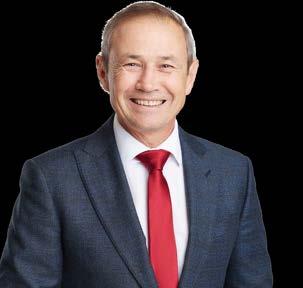
additional $36.4 million to slash green tape and speed up approvals followed by a further $14 million resourcing boost for the Environmental Protection Authority and the Office of the Appeals Convenor as part of our ambitious reform agenda for job-creating, decarbonisation focused projects. Our goal is to build a system that is modern and rigorous, but at the same time does not unnecessarily hold back economic development.
New approaches to cross-government collaboration will deliver faster environmental approvals for renewable energy projects without compromising Western Australia’s unique environmental biodiversity.
We are also making major investments –$5.4 billion since 2017 – to upgrade the State’s main electricity network, decarbonise and unlock renewable energy generation opportunities, putting Western Australia on track to become a green energy powerhouse. Further enhancing access to clean, reliable, secure and affordable energy into the future will help underpin continued growth across the Western Australian economy.
The opportunities that we are investing in now will shape our future.
This report provides a snapshot of just some of the developments taking place across the State and renews the Western Australian Government’s commitment to building an increasingly dynamic and sophisticated economy. Diversify WA is about laying the foundations so that Western Australia remains the best place in the world to live, study, work, do business and most importantly, raise our future generations.
Hon Roger Cook MLA
Premier; Minister for State and Industry Development, Jobs and Trade; Public Sector Management; Federal-State Relations
Diversify WA was released in 2019 and is the State’s economic development framework. It outlines the Western Australian Government’s vision for a strong and diversified economy, delivering secure, quality jobs through increased investment across a broad range of industries. It also sets out initiatives, actions and strategies to achieve this vision, through collaboration between government, industry and the community.
Diversify WA identifies nine external-facing sec tors for strategic development that match Western Australia’s unique strengths with global trends to achieve growth across the economy. The Diversify WA 2024 update separates out creative industries as a distinct priority sector, having previously been part of the broader tourism, events and creative industries sector. This is in recognition of the sector’s unique growth trajectory and profile
of opportunities and challenges, with an exciting and diverse array of investments and projects in the pipeline.
In 2023, the Western Australian Government launched Future State: Accelerating Diversify WA, which expands the Diversify WA framework and highlights nine targeted diversification opportunities for strategic investment. These align with global social, geopolitical, economic and market trends and supply chain opportunities and have the potential to provide strong economic and social benefits for the State.
The Diversify WA framework recognises the importance of activities that will improve value and productivity across multiple sectors of the external-facing economy – seven key enablers are critical to achieving our economic objectives and accelerating growth.


6.8%
Western Australia’s gross state product grew by 6.8% across the three years to 2023-24.
1.6 million
Record number of Western Australians in work (1.6 million in 2023-24).
The Western Australian Government has committed $5.4 billion since 2017 to the clean energy transition.
Record visitor expenditure in Western Australia of $18.3 billion in 2023-24.
The Western Australian Government is investing $233.5 million to construct Perth Film Studios.
Over 72,000 international students enrolled in 2023, a new record for Western Australia.
Western Australia announced as home to the new AUKUS fleet of submarines.
47%
Western Australia accounted for 47% of Australia’s total goods exports in 2023-24.
$36 billion
Record non-mining investment in Western Australia of $36 billion in 2023-24.
Western Australia mined and exported around half the world’s supply of lithium in 2023.
The number of domestic and international space companies operating in Western Australia has grown to 130.
As of October 2024, $185 million has been allocated to over 620 projects supporting local opportunities in health and medical research, innovation and commercialisation.
The value of agri-food exports was $42 billion over the three years to 2023-24.
Key indicators show that Western Australia has retained a strong economic position since the Diversify WA update in 2021. Over the three years to 2023-24, gross state product grew cumulatively by 6.8 per cent in real terms. Western Australia’s agricultural and mining exports fell in 2023-24 from record high volumes, which led to the State’s economic growth being below the national average. However, non-mining industries recorded solid growth in 2023-24, indicating Western Australia is becoming less reliant on the mining industry to generate growth.
Western Australia also continues to punch above its weight in its contribution to national prosperity, largely driven by the strong performance of the resources sector. Robust economic and financial management by the Western Australian Government has also seen the State regain its triple-A ( AAA) credit rating from the world’s two major credit agencies (S&P Global and Moody’s) – currently the only Australian jurisdiction with these credentials.
Industry contribution to change in Western Australia’s gross state product

Note: Real change using chain volume measures. (a) Ownership of dwellings, taxes less subsidies on products, and statistical discrepancy.
Source: Based on data from ABS Australian National Accounts: State Accounts.
Western Australia’s business confidence index, quarters

Note: Base year of index is 2018 = 100.0
Source: CCIWA Economic Insight.
Strong economic performance has also led to high jobs growth. Employment grew by 3.2 per cent in 2022-23 and a further 3.8 per cent in 2023-24. More Western Australians are employed than ever before. Surveys conducted by the Chamber of Commerce and Industry Western Australia also show that business confidence remains high, despite concerns around rising business costs and workforce challenges.
Western Australia’s employed persons by type: change
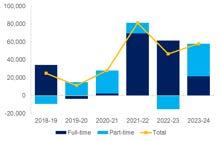
Note: Financial year averages.
Source: Based on data from ABS Labour Force, Australia.
Progress towards economic diversification is also encouraging. While the resources industry powered the economy during the height of the pandemic, recent growth has been spread much more evenly across other sectors. In the past three years, one of the leading contributors to growth has been primary industries. The reopening of state and international borders in 2022 was a pivotal moment, providing a much-needed boost to key services sectors such as international education and tourism. These industries have bounced back strongly and are now operating above pre-pandemic levels.
Other indicators, however, show that Western Australia’s reliance on the resources sector remains significant, especially iron ore. In 2023-24, iron ore alone accounted for 54 per cent of the value of goods exports. The significance of China as a trading partner also remains, with China accounting for 84 per cent of Western Australia’s iron ore exports in 2023-24.
While the high demand for iron ore has undoubtedly benefitted Western Australia, the longer-term outlook remains uncertain.
Demand from China is expected to decline over time, driven by changes to the size and composition of its economic growth as well as its ambitions to achieve iron ore selfsufficiency. O ther markets, including India, Indonesia and Vietnam, are potential sources of additional demand over the medium term. The clean energy transition and growth of the green steel industry may also provide opportunities for Western Australia to increase the value-add and employment of its iron ore industry, although the scale of this demand remains unclear.
In order to seize the State’s diversification opportunities, the Western Australian Government is continuing to invest in key economic enabling activities that support growth and productivity across our priority sectors. Initiatives such as the $500 million Strategic Industries Fund, the Investment Attraction Fund, and the Green Energy Approvals reforms collectively work to ensure Western Australia remains an attractive investment destination and a strong global trading partner across a range of industries and international markets.
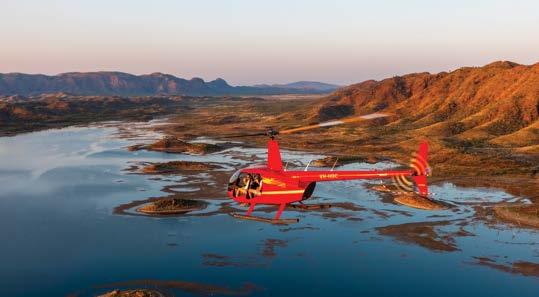
International demand for clean energy has grown over the past two years, as global economies have accelerated efforts to develop innovative and sustainable ways to decarbonise. Western Australia has continued to invest to become a major clean energy supplier, harnessing the State’s position as Australia’s gateway to the Indo-Pacific region with an abundance of renewable energy sources, such as sun and wind.
Western Australia is the largest liquefied natural gas (LNG) exporter in Australia and accounted for 12 per cent of global LNG exports in 2023. While Japan has been the State’s largest LNG customer since 1989, Western Australia is diversifying its trade partners with greater exports throughout Asian markets.
Efforts to reduce carbon emissions have seen global investment in clean energies outstrip investment in fossil fuels in recent years. In 2023, global investment in solar generation eclipsed investment in oil production for the first time.
Western Australia’s LNG sales
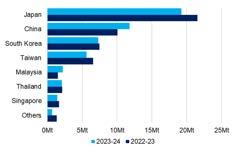
Note: Mt = Million tonnes.
Source: EnergyQuest, LNG Report (July 2022 to June 2024).
Driving policy agendas and global investment, governments around the world are seeking to secure and diversify their supply chains. The International Energy Agency estimates that the global market for key massmanufactured clean energy technologies will be worth around US$650 billion a year by 2030.
Western Australia has some of the best solar and wind generation potential in the world and is one of the few jurisdictions with commercially viable reserves of all the minerals needed to manufacture new battery technologies. These natural advantages position Western Australia as a leading partner for the global energy transition.
Western Australia’s electricity generation from renewables
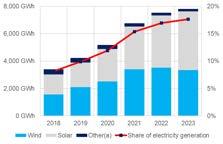
Note: GWh = gigawatt hour.
Source: Department of Climate Change, Energy, the Environment and Water, Australian Energy Statistics.
With the sector being shaped by the Western Australian Renewable Hydrogen Strategy, the pipeline of proposed clean energy investments has expanded significantly since 2021. This strategy was refreshed in 2024, with a focus on production, use and export, and clear goals and targets.
Note - Mt = Million tonnes.
Source: EnergyQuest, LNG Report (January 2022 to December 2023).
In the past two years alone, the Western Australian Government has allocated land to 18 major projects within the State’s Strategic Industrial Areas (SIAs), which will help to

support the global transition to net zero. These include green iron, green ammonia, renewable hydrogen production, advanced critical minerals processing, renewable electricity generation, and ammonium nitrate and methanol production projects. Together, they represent about $104 billion worth of investment, with the potential to generate 13,440 construction jobs and around 1,700 operational jobs.
To further facilitate the sector’s development, the Western Australian Government is working with hydrogen hub proponents and the Australian Government to advance three hydrogen hubs across the State.
Through industry and government coordination, extensive work is underway to develop hydrogen hubs in the Pilbara, Mid West and Kwinana, and activate land in the SIAs. Hydrogen hubs are intended to improve competitiveness by co-locating demand and supply, and attracting investment through infrastructure provision.
To date, investment in the hubs includes:
» A $140 million agreement between the Western Australian and Australian Governments to build the fi rst stage of the Pilbara Hydrogen Hub, a major future centre for hydrogen production, use and export.
» A $6 0 million investment from the Western Australian Government to advance the Mid West Hydrogen Hub to generate significant investment and employment in an area renowned for wind resources and potential for magnetite resource development.
» A $70 million commitment from the Australian Government for H2Kwinana, in the Kwinana SIA, with the aim to support the established industry to decarbonise and support renewable hydrogen domestic offtake.
The Western Australian Government has also made significant progress towards capturing the economic opportunities arising from decommissioning ageing offshore oil and gas infrastructure. Supported by a $5 million commitment from the Western Australian Government, Perth is now home to the Centre of Decommissioning Australia (CODA) –an independent body working with industry, government and the community to create a collaborative and sustainable approach. CODA estimates that during the next 50 years, approximately $60 billion will need to be spent to decommission Australia’s ageing offshore oil and gas infrastructure, presenting a significant economic opportunity for Western Australia to be a global leader in environmentally responsible decommissioning.
Progress has also been made towards unlocking the State’s massive carbon capture and storage (CCS) and carbon capture, utilisation and storage (CCUS) potential.
The Western Australia Government has passed legislation to enable the transport and storage of greenhouse gases and launched a CCUS Action Plan in November 2024 that is intended to drive further growth and application of CCUS technologies.
Notably, the Australian Government has announced the major Future Made in Australia program, with investment totalling $22.7 billion set aside in the 2024-25 Federal Budget to support the transition to net zero and enhance national sovereign capability. This includes $13.7 billion for renewable hydrogen and critical minerals production tax incentives, and a $1.7 billion Future Made in Australia Innovation Fund that will fund the deployment of clean energy innovative technologies and facilities. These programs provide further incentives to build industry capacity in Western Australia and leverage the State’s natural advantages.
Carbon capture, utilisation and storage (CCUS) will be critical to achieving net zero and is currently the only technologically viable option to decarbonise some emissions-intensive industries, including aluminium refining, and cement and fertiliser production.
A study commissioned and co-funded by the Western Australian LNG Jobs Taskforce has revealed the State’s enormous potential to develop CCUS hubs, which could boost gross state product by $55 billion between 2030 and 2050. Undertaken by the Commonwealth Scientific and Industrial Research Organisation (CSIRO) and the Global CCS Institute, the study found that Western Australia has the capacity to store its own carbon and the potential to support the decarbonisation ambitions of key global partners. The study also found that existing infrastructure in the State has the potential to be repurposed for CCUS hubs, which could attract significant overseas investment and enhance our economic relationships internationally.
Creek Renewable Hydrogen
Fortescue Energy
Boolantha
HyEnergy Project Province Resources
Hydrogen Microgrid Demonstration Project Horizon Power
Preparing the Dampier to Bunbury Natural Gas Pipeline for Hydrogen Dampier Bunbury Pipeline
Project status (end of October 2023)
Under development
Study completed
Under construction
Operating
Hydrogen Hub
Multiple sites and/or regions
Mid West Hydrogen Hub
Murchison Hydrogen Renewables Project Murchison Hydrogen Renewables
Arrowsmith Hydrogen Project Infinite Green Energy MEG-HP1 Project Infinite Green Energy
Oakajee Strategic Industrial Area Land Allocation Proponents
BP
Geraldton Export-Scale Renewable Investment
Fortescue Energy
Oakajee Green Hydrogen Hub
Copenhagen Infrastructure Partners
Oakajee Green Hydrogen Project
Australian Renewable Energy Hub BP, InterContinental Energy, CWP Global
Green LOHC
Liquid Organic Hydrogen Carrier (LOHC) demonstration project
Kinara Power
Project Astra
Proponents
demonstration project Services)
Australian Renewable Energy Hub BP, InterContinental Energy, CWP Global, Macquarie Capital and Macquarie's Green Investment Group
Ord Hydrogen Feasibility Study
Pacific Hydro Australia Developments
POSCO Australia Green Hydrogen (P-AGH) Project
Yuri Renewable Hydrogen to Ammonia Project
POSCO Australia Green Hydrogen (P-AGH) Project POSCO
Blue Diamond Australia (Phoenix Blasting Services)
Project Terra
Yuri Renewable Hydrogen to Ammonia Project
ENGIE / Yara Pilbara Fertiliser Pilbara Hydrogen Hub
Commercial Demonstration Plant Hazer Group Limited
H2Perth Woodside Energy
Compressed Hydrogen Export Project Provaris Energy
Hydrogen Refueller @H2Perth Woodside Energy
Hydrogen Blending Project ATCO
Boolantha Project Gascoyne Green Energy
H2Kwinana bp Australia
HyEnergy Project Province Resources
Green Hydrogen for the City of Cockburn City of Cockburn Hydrogen Refueller Station ATCO
Renewable Hydrogen Transport Hub in the City of Mandurah Hazer Group
Bristol Springs Solar Hydrogen Project Frontier Energy
Mid West Hydrogen Hub
ENGIE / Yara Pilbara Fertiliser Pilbara Hydrogen Hub
Clean Energy Project Various proponents
Uaroo Renewable Energy Hub Fortescue Energy
Compressed Hydrogen Export Project Provaris Energy
Hyer Penetration Energy Developments
Limited East Kimberley
Boolantha Gascoyne Green Energy
HyEnergy Project Province Resources
Hybrid PV-Battery-Hydrogen System for Microgrids Murdoch University
Christmas Creek Green Iron Trial Commercial Plant
Hybrid PV-Battery-Hydrogen Murdoch University
Christmas Creek Fortescue Energy
Preparing the Dampier to Bunbury Natural Gas Pipeline for Hydrogen Dampier Bunbury Pipeline
Christmas Creek Renewable Hydrogen Mobility Project Fortescue Energy
Murchison Hydrogen Renewables Project Murchison Hydrogen Renewables
Denham Hydrogen Microgrid Demonstration Project Horizon Power Project Haber Strike Energy
Denham Hydrogen Microgrid Demonstration Project Horizon Power
Preparing the Dampier to Bunbury Natural Gas Pipeline for Hydrogen Dampier Bunbury Pipeline
Murchison Hydrogen Renewables Project Murchison Hydrogen Renewables
Collie Battery and Hydrogen Industrial Hub Sunshot Energy
Mid West Hydrogen Hub Kwinana Hydrogen Hub
Oakajee Energy Green Hydrogen and Ammonia Export Project Oakajee Energy
Arrowsmith Hydrogen Project Infinite Green Energy
Parmelia Green Hydrogen Project APA Group, Wesfarmers
Kwinana Hydrogen Hub
MEG-HP1 Project Infinite Green Energy
Feasibility of Renewable Hydrogen to Decarbonise the Esperance Region Horizon Power
Arrowsmith Hydrogen Project Infinite Green Energy
Parmelia Green Hydrogen Project APA Group, Wesfarmers
MEG-HP1 Project Infinite Green Energy
See inset
Feasibility of Renewable Hydrogen to Decarbonise the Esperance Region Horizon Power
Western Green Energy Hub InterContinental Energy, CWP Global, Mirning Green Energy Limited
South East Western Australia Hub Fortescue Energy
Please refer to the QR code for the latest Invest and Trade Western Australia hydrogen updates
South Western Fortescue

The visitor economy in Western Australia continues to grow. In 2023-24, 11.8 million international and domestic visitors came to or travelled within WA, spending $18.3 billion – with 45 per cent of that being spent in the regions. This visitor spend is a record high for Western Australia, and 36 per cent ahead of 2019 levels, highlighting a strong outlook for the sector.
International and interstate visitation has been bolstered through the Western Australian Government’s commitment to promoting the State on the global stage and attracting world class events. Western Australia’s tourism brand ‘Walking On A Dream’ was featured throughout the FIFA Women’s World Cup Australia & New Zealand 2023™, promoting the State to millions of fans.
In February 2024, the Western Australian Visitor Economy Strategy 2033 (WAVES 2033) was released, representing the Western Australian Government’s 10-year vision to elevate the State to a world-class visitor destination through new growth opportunities and experiences.
As part of the strategy, the Western Australian Government also aims to cement Western Australia as the fastest growing events destination in the region, and to be the premier destination for Aboriginal tourism in Australia. Events injected $286 million into Western Australia’s economy in 2023-24. This is alongside other key priorities in aviation connectivity, regional destination and experience development, workforce development, and global promotion of Western Australia’s tourism destinations and activities.
To ensure ongoing growth of the tourism industry, further funding of $352 million was announced as part of the Western Australia State Budget 2024-25. This included $165 million for a new Outdoor Adventure Tourism packagethe single largest investment in regional tourism infrastructure in the State’s history.
Western Australia’s visitor expenditure

Note: (a) Includes daytrips.
Source: Tourism Research Australia International and National Visitor Surveys.

Seeking to create a unique regional tourism event, the Western Australian Government seized the excitement of a rare total solar eclipse to deliver the Dark Sky Festival in April 2023. The festival attracted 25,000 people to E xmouth and the surrounding region, comprising 102 events over five days. Across the Pilbara and Gascoyne regions, visitor expenditure reached over $16 million. This marked a significant moment for astronomy and regional tourism, and provided an opportunity to highlight Aboriginal cultural experiences and stories including the establishment of a new annual event, Jamba Nyinayi Festival, in the Gascoyne.
The Western Australian Government also funded major upgrades and improvements to roads, marine infrastructure, telecommunication networks and local facilities - ultimately delivering long-lasting benefits for tourism in the region.
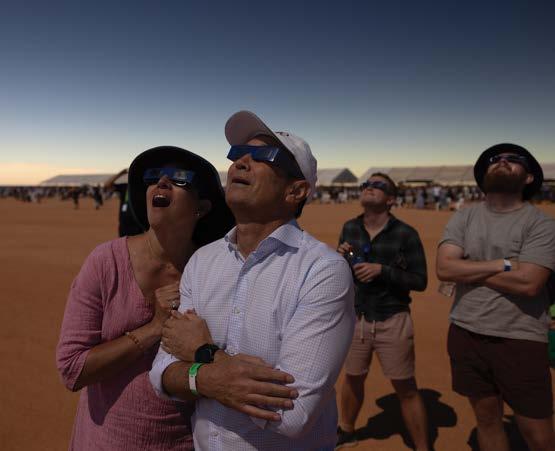
Creative industries represent a diverse and growing sector, contributing around $3.3 billion every year to the Western Australian economy. Creative industries turn original creative content into social and commercial outcomes for local, national and international markets. Activities in the sector include: architecture and design, software and games, performing and visual arts, and screen production.
Western Australia’s creative industries demonstrated resilience through the pandemic, boosted by a wave of new screen productions. During the pandemic, the games and interactive sector in Western Australia also experienced remarkable growth, tripling in size.
Supported by incentives including the Western Australian Production Attraction Incentive and the Western Australian Regional Screen Fund, recent productions have included the multiaward-winning Mystery Road: Origin (2022) and Sweet As (2022). Supported screen productions contributed $41.5 million in direct expenditure to the economy and a total estimated associated economic contribution of $260 million in 2022-23.
To support further growth of the sector, the Western Australian Government has committed $31.9 million to implement the Western Australian Screen Industry Strategy.
Construction of Perth Film Studios, Western Australia’s first large-scale screen production facility, also started in January 2024. Supported by $233.5 million from the Western Australian Government, the facility will further raise the profile of the State as the place to produce high-quality productions. The sector also recently established a Creative Tech Village, a state-wide network focused on building creative industry partnerships and growing entrepreneurship.
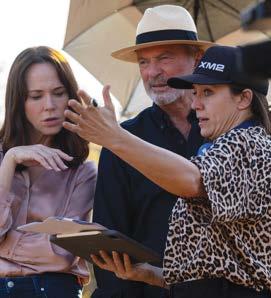
Secured via the Western Australian Production Attraction Incentive, season 3 of The Twelve is an eight-part drama series for Binge and Foxtel, currently filming across the Perth metropolitan and Margaret River regions. The production is expected to inject around $10 million into the economy, and follows season 2, filmed in the Perth metropolitan and Wheatbelt regions. Starring celebrated actors Sam Neill and Frances O’Connor, The Twelve directly employs over 150 Western Australian cast and crew.
With opportunities in the sector continuing to expand, efforts are underway to address the impacts of the nation-wide creative skills shortage through an increased focus on creating employment and talent development opportunities. Creative industries skills will also be supported through the construction of Edith Cowan University’s Perth CBD campus, which commenced in February 2023 and has been supported by a $199 million contribution from the Western Australian Government under the Perth City Deal. The campus will include the new home of the Western Australian Academy of Performing Arts (WAAPA), a major hub of creative and artistic talent.
International education has bounced back remarkably well from the impacts of COVID-19, with students returning to Western Australia in record numbers. In 2023, international student enrolments totalled over 72,000 – a record for Western Australia. Recovery of student numbers was also the strongest of all states and territories.
The State’s share of total international enrolments in Australia reached 7.4 per cent by the end of 2023, an increase of almost two percentage points since borders reopened in 2022. This figure has continued to grow, exceeding 8 per cent through 2024.
In addition to cultural vibrancy, international education brings significant economic benefits to the State. In 2023, the sector is estimated to have contributed $2.9 billion to Western Australia’s economy. Further benefits arise from friends and relatives of international students visiting
Western Australia and boosting local businesses, particularly in tourism and hospitality. International students are also important to building the State’s human capital and meeting local skills gaps.
Ensuring the State continues to thrive as a premier destination for international education remains a major priority for the Western Australian Government. Numerous initiatives have been launched, aiming to support students and education providers, as well as secure the pipeline of future students.
Recently, the Australian Government has moved to constrain the number of international students in Australia under its Migration Strategy, which is creating significant challenges for the sector.
The Western Australian Government is working to support the sector on a pathway of long-term, sustainable growth.

Western Australia’s international student enrolments
Western Australia’s international student enrolments by market – percentage share
Source: Department of Education, International Student Monthly Summary and Data Tables.
61%
International student enrolments in 2023 were 61% higher than in 2022.
Source: Department of Education, International Student Monthly Summary and Data Tables.
$2.9 billion
Western Australia recorded $2.9 billion of education-related travel services exports in 2023.
The recovery of international education has been driven by collaboration across the sector and numerous targeted initiatives. These include an Agent Incentive Scheme, international student grants, scholarships and destination marketing activities.
Supported by $1 million under the Western Australian State Budget 2022-23, the International Education Familiarisation Program has been highly successful in promoting Western Australia as a study destination like no other. Funding was provided for groups led by both education providers ($700,000) as well as Western Australian Government Education Business Development Managers ($30 0,000). To date, Western Australia has welcomed over 200 international delegates from key regions including North A sia, South A sia, South-East A sia, the United Kingdom and Europe, the Middle East, Africa and L atin America. These included education agents, education providers and corporate partners.
Familiarisation groups participated in a range of activities aimed at raising global awareness of Western Australia’s international education sector, including training courses, site visits and tourism experiences. Many were delivered through cross-sector collaboration with education providers and partners, and the tourism industry. Surveys conducted following the Program showed major increases in delegates’ knowledge of Western Australia as a study destination. Delegates’ feedback also overwhelmingly indicated strong confidence in recommending Western Australia to prospective students in their respective markets, highlighting the State’s natural beauty and safety as major drawcards.

Western Australia’s defence industries continue to grow, contributing $469 million to the State’s economy in 2022-23, an increase of 14 per cent from the previous year.
The A ustralian M arine C omplex ( AMC) i s th e sector’s key infrastructure asset in Western Australia, with one third of the site’s work linked to defence. Over 150 small and medium sized businesses operate at the AMC, with their activities contributing significantly to national maritime innovation and sovereign shipbuilding.
AUKUS presents a major opportunity to invigorate the sector. Western Australia’s announcement as the location for Submarine Rotational Force - West will generate thousands of direct jobs and multidecadal benefits for the State, building off its historical capabilities in Collins Class submarine sustainment.
The recently announced consolidated Defence Precinct at Henderson is the critical next step in delivering continuous naval shipbuilding in Western Australia under the AUKUS pathway. This will see a multi-billion dollar investment in defence and common user infrastructure development in the area, driving a major expansion of defence industries and jobs.
The sector is supported by robust workforce planning and a nationally recognised defence training provider, South Metropolitan TAFE, which won the 2022 Academic Institution of the Year Award at the Defence Connect Australian Defence Industry Awards.
Western Australia’s public universities successfully secured 426 Commonwealth Government Supported Places for STEM courses beginning in 2024, to help grow an AUKUS skilled workforce for nuclear powered submarine sustainment.
The Western Australian Government has recently completed three of the four fasttracked infrastructure projects at the AMC as part of the $89.3 million WA Recovery Plan investment launched in July 2020, including an upgraded vessel transfer path, a suite of wharf extensions and road intersection upgrades.
Western Australia’s defence industry direct employment headcount

Source: Based on data from ABS Australian Defence Industry Account, Experimental Estimates.
From 2027, British and American nuclearpowered submarines will establish a ‘rotational presence’ at HMAS Stirling, the Western Australian base for the Royal Australian Navy and the largest naval base in Australia.
In the lead up to this event, visiting allied submarines will undergo progressively deeper levels of scheduled maintenance at HMAS Stirling, starting this year with a US Virginiaclass submarine undergoing non-intrusive maintenance via a US submarine tender vessel that will include up to 30 Royal Australian Navy crew onboard.

Fostering strong links between the Western Australian Government, TAFE, industry and the education sector is key to developing creative solutions to workforce issues and keeping the economy strong.
Supported by the Western Australian Defence Industry Workforce O ffice (co-located with the Department of Training and Workforce Development), South Metropolitan TAFE has joined forces with Raytheon Australia to train its workers in Exmouth and facilitate development of the defence space industry workforce. Raytheon Australia is a leading provider to the Australian Defence Force with expertise in defence space capabilities.
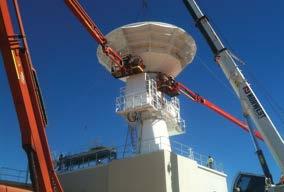
Announced in March 2023 as part of Raytheon Australia’s new Invested in Exmouth Program, the partnership will help more Western Australians to join the priority defence industry workforce.
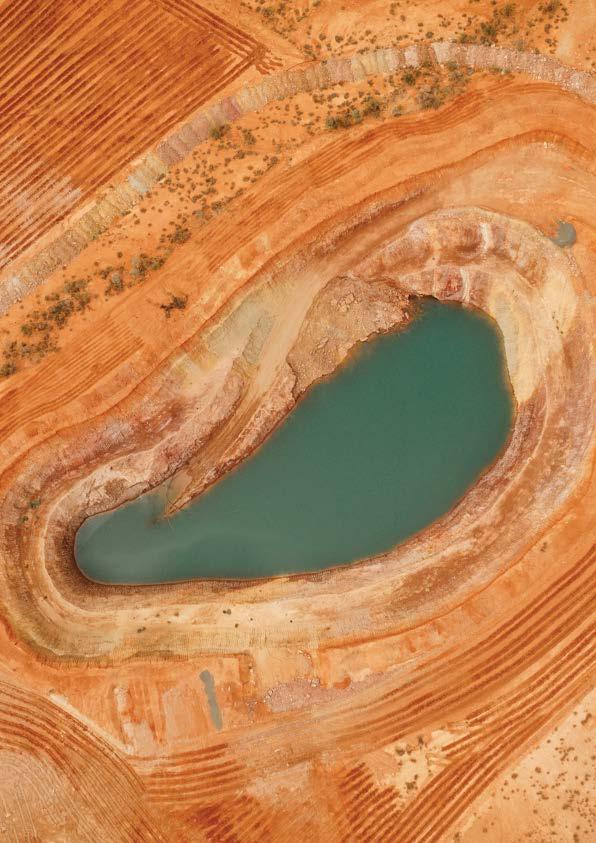
For several decades, mining has been the backbone of the Western Australian economy and accounted for 44 per cent of gross state product in 2023-24. Export values have been sustained at high levels since the 2021 Diversify WA update. While iron ore still dominates the sector, there is rising demand for the State’s abundance of critical minerals as the clean energy transition unfolds around the world.
The value of Western Australia’s lithium exports grew by more than 20 times between 2020-21 and 2022-23, with the State producing around half of the world’s lithium. While prices have come down from record highs in 2022-23, the long-term outlook for the industry remains positive. The most important use of lithium remains the rechargeable batteries found in a diverse array of everyday products, including smartphones, computers and electric vehicles.
Nearly all of the minerals on Australia’s Critical Mineral List can be found in Western Australia. In addition to being the world’s major supplier of lithium, Western Australia was the fourth largest supplier of cobalt and rare earths in 2023. In 2023-24, direct full-time equivalent employment in battery and critical minerals industry grew by 14 per cent.
Western Australia’s resources sector depends on more than 14,000 businesses, 1,700 of which are specialised mining equipment, technology and services (METS) companies. With years of experience supporting largescale projects, Western Australia has developed a world-leading METS sector along with a diverse range of high-end capabilities. The sector will remain critical for decades to come as Western Australia continues to meet the global demand for commodities and tap into new markets. Global decarbonisation will also deliver many opportunities for the METS sector to capitalise on.
The Western Australian Government is committed to supporting local METS businesses to transform cutting-edge research and technology into successful commercial and export outcomes. Run by the Minerals Research Institute of Western Australia, the METS Innovation Program is a dedicated funding program assisting businesses in service and product development, connecting with potential collaborators and sponsors, and navigating the innovation ecosystem.
Continuing with its support in the sector, in 2024 the Western Australian Government released the updated Battery and Critical Minerals Strategy 2024-2030 and committed $100 million for the Critical Minerals Advanced Processing Common User Facility contingent upon matched funding from the Commonwealth. In the Western Australian State Budget 2024-25 $6.5 million in funding was announced to secure a commercial-scale graphite processing facility in Collie.
Western Australia’s sales value of mineral commodities
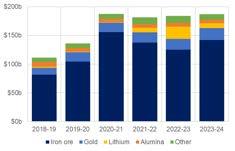
Source: Western Australian Department of Energy, Mines, Industry Regulation and Safety Resource Statistics.
Operating/committed
Planned – with government funding in place
Rare earths
Hastings Technology Metals
Production capacity:
3,400 tpa NdPr^
Capex: $948 million**
Lithium
Tianqi Lithium Australia
Production capacity:
48,000 tpa of lithium hydroxide
Capex: $700 million
Lithium
Covalent Lithium
Production capacity:
50,000 tpa of lithium hydroxide
Capex: $1.9 billion*
Graphite
Ecograf
Production capacity:
20,000 tpa of spherical graphite
Capex: $100 million
Vanadium
Australian Vanadium
Production capacity:
11,200 tpa of vanadium pentoxide
Capex: US$435 million
Rare earths
Iluka Resources
Production capacity:
17,500 tpa of rare earth oxides
Capex: $1.2 billion
Graphite
Rare earths
Lynas Rare Earths
Production capacity:
9,000 tpa NdPr ^
Capex: $730 million^^
International Graphite
Production capacity: 4000 tpa micronized graphite
Capex: $12.5 million
Lithium
Albemarle Lithium
Production capacity:
25,000 tpa of lithium hydroxide
Capex: $3 billion
tpa = tonnes per annum
*inclusive of mine and concentrator
** Total project cost for stage 1 and 2
^ Neodymium and Praseodymium equivalent
^^ Figure inclusive of Malaysian plant upgrades
Production capacity and capex �gures are provided as estimates only. Actual production and costs may vary
tpa = tonnes per annum
* Figure inclusive of mine and concentrator
** Total project cost for stage 1 and 2
^ N eodymium and Praseodymium equivalent
^^ Figure inclusive of Malaysian plant upgrades
Production c apacity and C apEx fi gures are provided as estimates only. Actual prodcution costs may v ary
Western Australia’s battery and critical minerals processing industry has grown significantly in recent years. While the State already supplies around half the world’s lithium and is a major global supplier of critical minerals (including cobalt and rare earths), downstream processing typically occurs overseas. This trend, however, is changing.
Since 2015, almost $9 billion has been invested into projects manufacturing battery chemicals and separated rare earth oxides in Western Australia. There are billions of dollars’ worth of additional private investment in the pipeline. This commitment to building the industry has seen the State leverage over $2.2 billion in Australian Government support between 2021 and 2023 for a range of value-adding projects. These investments are positioning Western Australia as a new, reliable and ethical supply source of high purity critical minerals products.
Lithium hydroxide is being produced from processing plants in Kwinana and Kemerton and a third lithium hydroxide plant is under construction at Kwinana as part of the Mt Holland project. Although prices for lithium hydroxide have weakened in 2024, global lithium hydroxide production is forecast to rise by 21 per cent a year to 2026.
In addition, global scale investments in rare earth processing facilities are set to make Western Australia one of the few jurisdictions outside China offering export quantities of processed rare earths.
Western Australia’s sales value of battery and critical minerals

for some years due to confidentiality restrictions.
Source: Western Australian Department of Energy, Mines, Industry Regulation and Safety, Resource Statistics.
Winner of the Western Australia Innovator of the Year award in 2023, Portable PPB Pty Ltd is revolutionising gold exploration around the world. A METS company based in Western Australia, Portable PPB was supported to commercialise their CSIRO-developed innovative product, detectORE ™, w hich enables in-field gold analysis creating major efficiency improvements on conventional methods and speeding up the exploration process. The Innovator of the Year Program has assisted Portable PPB to commercialise, increasing the competitiveness of the Western Australian mining sector, as well as opening new international markets for their products.

Western Australia is now home to a world class facility that trains, tests and controls remote and autonomous o perations i n s pace a nd other h arsh e nvironments. L aunched i n N ovember 2022 and e stablished with contributions from the Australian and Western Australian Governments and Fugro Australia, SpAARC is a world-recognised commercial facility that will support numerous new s pace robotics p rojects. T hese i nclude N ASA’s return to t he M oon a s well a s p roviding su pport for gateways and space stations. In October 2023, the Western Australian Government announced a $5 million commitment to the Perth-based facility to grow its operational capability for space missions.
Global space industries are experiencing a surge in activity, propelled by a sharp decline in the cost of building and launching satellites, and a major uptake in governmentled space exploration around the world. Western Australia’s space industries sector has also grown significantly in recent years and is now home to more than 130 space and space-related organisations.
In 2024 the inaugural Western Australia Space Industry Strategy was launched to articulate a clear vision and provide a f ramework fo r t he se ctor. L everaging We stern Australia’s world-leading remote operation capabilities developed through the resources sector, the Western Australian Government is committed to developing the State’s capacity to design, manufacture and operate space and cross-sectoral technologies. This includes continued co-investment in the industryled and Perth - he adquartered Australian Remote Operations for Space and Earth (AROSE) e ntity t hat t ransfers l eading-edge te chnology between the resources and space sectors.
Funding under the Western Australian State Budget 2024-25 has also been provided to host a series of international space conferences in Western Australia, connecting the local sector to space agencies, industry leaders, research organisations and other partners from around the world. This builds on the inaugural Indo-Pacific Space and Earth Conference held in Perth in October 2023.
The Western Australian Government has supported Curtin University’s Binar CubeSat Space Program, which saw Western Australia’s first satellite launched into space in 2021. It is also supporting The University of Western A ustralia’s TeraNet p roject – a
ne xt-generation communications network for sending high speed data to and from objects in space – which is positioning the State as a leader in commercial optical laser communications technology.
$95 million
Since 2020, the Western Australian Government has invested more than $95 million in the sector and supporting activities.
34%
The number of space companies in Western Australia has grown by 34% since 2021.
$1.2 billion
Since 2018, more than $1.2 billion of public and private investment has been committed to the sector in Western Australia.

Health and medical life sciences generates over $100 million worth of exports annually.
NovaCina was launched in 2023, in Perth, by t he B ridgeWest G roup (a M iami-based investment fi rm), fo llowing acq uisition of a manufacturing facility formerly owned by P fizer. N ovaCina se rvices cl ients across the Asia Pacific region and supply pharmaceutical products in over 90 countries. T he l aunch o f N ovaCina he lped retain over 400 specialised staff, with advanced skills that are critical to serving the pharmaceutical industry. NovaCina will wor k towards bro adening it s manufacturing capabilities to an expanding client-base.
NovaCina received $2 m illion f rom the Western Australian Government’s Investment Attraction Fund, which will support a significant expansion at the facility to locally manufacture more medical products. The improvements will facilitate onshore commercialisation of Australian intellectual property, replace importation needs, and drive new innovation and commercial opportunities. The expansion is set to create almost 70 new local jobs and employ 31 contractors during construction. I n 2024, N ovacina were also awarded an additional $5 million in government grant funding for the development of a facility for small scale formulation and manufacturing.
Health and medical life sciences in Western Australia represents a diverse ecosystem of world-class universities and research institutes and not-for-profit organisations that provides the foundational growth for a biomedical industry that incudes digital health, medical devices, pharmaceutical and biotechnology and precision health. This growth is bolstering Western Australia’s resilience to future health risks and working to address long-term challenges such as an ageing population and rising prevalence of chronic disease.
The sector presents increasing employment opportunities, growing to more than 100 companies and providing new skilled employment opportunities in Western Australia.
Employment in Western Australia’s health and medical life sciences sector
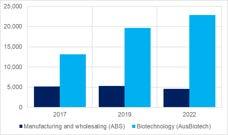
Source: Based on data from ABS International Trade in Goods and Biotechnology and AusBiotech, Australian Biotechnology Sector Snapshot 2022 (supported by Grant Thornton).
In recent years, there has been increasing global interest in locally developed medical technology, signalling promising commercial and export opportunities. The sector already generates over $100 million in exports annually. Western Australia’s biomedical industry has more than doubled in the past five years, with increasing focus on t argeting
the United States and Asia-Pacific market. This is helped by a range of international outreach activities, which promote Western Australian capabilities on the world stage and facilitate connections with overseas markets.
The State’s strengths in other areas, such as autonomous and remote operations, robotics and system integration, are also supporting advancements in digital health and medical precision products.
Recognising its growth potential and importance, the Western Australian Government has launched numerous initiatives to further support the sector:
» The Health and Medical Life Sciences Industry Strategy, Western Australia’s first strategy for this sector that includes $8.65 million in funding for its implementation over four years. The Strategy addresses key areas for the Government to focus on, including workforce initiatives, common user infrastructure and unlocking government procurement to support local innovations.
» The Western Australia Health and Medical Research Strategy 2023-2033 outlines the State’s priorities and direction of health and medical research. Focusing on increasing collaboration, investment, capacity and capability, the strategy will position the State as an international leader in health and medical research and ensure that the benefits of research are felt by the community.
» The Future Health Research and Innovation Fund, which provides secure funding to support activity across the sector from research and innovation through to commercialisation. Since being established in 2020, around $185 million has been awarded to over 620 projects in the health and medical life sciences sector. A further $250 million is available over the next four years.
» Seven health and medical life sciences projects supported by more than $20 million from the first round of the Investment Attraction Fund announced in 2022. These include projects in local pharmaceutical production, and advanced manufacturing of medical biosensors.

Western Australia has a variety of established primary industries including agriculture, commercial fisheries, aquaculture, as well as a growing food and beverage manufacturing sector. Collectively, these industries contribute more than $10 billion to annual gross state product and are particularly important in supporting employment and development across the regions.
Over the long term, agricultural production has trended upwards, which is largely the result of continuous investment by the Western Australian Government into research, innovation and development programs. These allow the sector to manage the numerous risks it is exposed to (including more variable climatic conditions), which can greatly affect yields and pasture growth. Other challenges facing the sector include rising fertiliser and fuel costs, and labour constraints affecting productivity.
The grains industry remains Western Australia’s largest agricultural sector. Favourable growing conditions in 2022 saw a record harvest of over 26 million tonnes. Conditions in 2023-24, however, saw
production fall below the 10-year average to 14.5 million tonnes, affecting the value of exports. Much of the sector is export oriented, with around 80 to 90 per cent of production going to international markets. Trade performance with emerging Asian economies has been exceptionally strong in the last two years. In 2023, wheat exports to ASEAN countries were $3.2 billion, an annual increase of 42 per cent.
Across sectors, there are significant opportunities to add value beyond the farm gate. WA’s agrifood and beverage exports sector is thriving with 2023-24 exports exceeding $13 billion. Locally, we have seen growing capabilities in our food and beverage manufacturing sector with output increasing to $8.6 billion in 2022-23. The sector benefits from Western Australia’s proximity to the growing middle class markets across Asia, as well as the State’s high standards in sustainable production, animal welfare and biosecurity. Under the State’s fi rst ever Craft Beer Strategy, Western Australia also aims to triple the volume or value of locally produced beer over ten years.
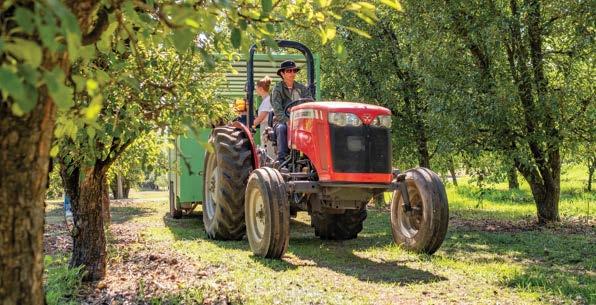
The Western Australian Government continues to provide targeted support to the sector. Key initiatives in the Western Australian State Budget 2024-25 included:
» $26 million biosecurity package comprising measures to protect the State’s primary industries and natural environment from pest and disease threats.
» $10 million grant scheme for horticulture businesses in the Manjimup-Pemberton region to improve water security and adapt to climate change.
» $5 million grants scheme supported by the Investment Attraction Fund, which will support sustainable fi nfish production in the Kimberley’s Buccaneer Archipelago.
Western Australia’s agri-food and beverage exports by major commodity
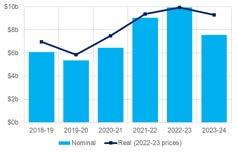
Source: Based on data from ABS Australian National Accounts: State Accounts.
Western Australia’s value of agri-food exports by major commodity

Note: Excludes the value of confidential export items.
Source: Based on data from ABS International Trade in Goods.
Food Innovation Precinct, Peel Business Park
CREDIT: The Department of Primary Industries and Regional Development
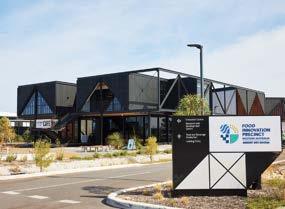
The Food Innovation Precinct of Western A ustralia ( FIPWA) w as o pened in February 2023, in the Peel Business Park, supported by $45 million from the Western Australian Government’s Transform Peel Initiative and $21.75 million from the Australian Government’s Regional Growth Fund. The precinct comprises a Research and Development Centre, Innovation Centre, and Food and Beverage Centre housing a dedicated Food Technology Facility. These world-class facilities and equipment will be used to test and explore new manufactured food and beverage products, giving businesses the confidence to pu rsue com mercialisation and l aunch their products globally.
In addition, the Western Australian Government has also invested $12.2 million to create a common use Food Technology Facility. This will assist primary producers and food and beverage businesses to develop, test and produce new value-added products by using innovative advanced manufacturing technologies and processes.
Economic modelling estimates that the FIPWA is positioned to provide a billiondollar boost to Western Australia across the food and beverage sector and wider economy over the next fi ve years.
Excludes the
A thriving economy and industrial sector depends on infrastructure and land that is suitably located, cost-effective and fit for purpose.
To meet the State’s future economic development needs, $42.4 billion has been committed over the next four years for infrastructure, including $11.8 billion for road, rail and transport projects. The Western Australian Government is also taking steps to ensure the adequate supply of project-ready land across the State. These actions will ensure Western Australia remains an attractive place to invest and do business.
Since the 2021 Diversify WA update, key infrastructure and land initiatives announced include:
» A $500 million Strategic Industries Fund, announced in the Western Australian State Budget 2024-25, to deliver common-user and other enabling infrastructure at SIAs. An initial $125 million will go towards opening up new industrial land at L atitude 32 in Kwinana, responding to industry’s strong interest in the region.
» $160 million of industrial lease incentives to attract large-scale clean energy and diversification projects to establish operations in Western Australia’s SIAs. The scheme will ensure the State can continue to secure multi-billion dollar projects that create thousands of ongoing jobs in the industries of the future, including large-scale clean hydrogen, green steel, critical minerals processing and renewable energy projects.
» $116 million over the next two years towards Westport , including for early marine, civil and road works to transition container trade from Fremantle to Kwinana, unlocking future trade opportunities and economic capacity. This was recently boosted by an additional investment of $273 million to progress Stage 4 of Westport planning.
» An additional $500 million in the Western Australian State Budget 2024-25 for the transition to a cleaner, more affordable and reliable energy future. This includes $324 million to undertake planning and procure long-lead transmission infrastructure on the State’s main electricity network (the South West Interconnected System), and $148 million to construct common user electricity network infrastructure in the North West Interconnected System in the Pilbara. These additional projects bring total investment into the energy transition to over $5.4 billion since 2017, ensuring the State’s energy infrastructure keeps pace with demand.
» The major expansion of infrastructure at Geraldton Port and Lumsden Point in the Port of Port Hedland to facilitate the import of renewable energy infrastructure, deliver continued economic growth, support trade diversification and boost export competitiveness.
» The release of WA: Digitally Evolved, which includes a priority action to unlock access to digital infrastructure, platforms and piloting facilities to support the growth and development of local businesses.

Investment in training and workforce development is essential to building a pipeline of skilled workers to meet current and future industry needs. In 2023, the State saw historically high vocational education and training ( VET) course enrolments through the Fee Free and Lower fees, local skills initiatives, with more than 130 fee free qualifications and skill sets and over 160 Lower fees, local skills courses available. Interest in free training has continued to surge, with enrolments in fee free qualifications at the end of March 2024 up 28 per cent compared to the previous year. Free and low fee training targets skills shortages and sectors prioritised for economic development and diversification, including building and construction, aged cared, hospitality, tourism, and agriculture.
To develop the skills needed for the clean energy transition, the Western Australian and Australian Governments entered an agreement, in June 2024, to establish the first TAFE Clean Energy Skills National Centre of E xcellence under the National Skills Agreement. The Centre will play a pivotal role in developing Western Australia’s clean energy workforce by promoting, coordinating and enhancing the capabilities of Western Australia’s VET system to cultivate the advanced skill sets necessary for the energy transition.
Another major priority for the Western Australian Government has been encouraging the take up of apprenticeships and traineeships. In 2023, the number of apprentices and trainees was more than 50 per cent higher compared to 2019. This will drive delivery of skilled workers needed to grow and diversify the economy, especially through housing and infrastructure delivery. Several initiatives, such as the Jobs and Skills WA Employer Incentive, have been launched to assist businesses that employ apprentices or new entrant trainees.
Responding to increasing competition for skills globally, the Western Australian Government launched the $195 million Reconnect WA Strategy following the reopening of borders in 2022. The package contained a suite of initiatives targeting skilled migrants, international students and holiday makers, giving Western Australia the edge in attracting global talent.
This has been complemented by further initiatives to attract skilled migrants, including the Skilled Migrant Job Connect Program, the Construction Visa Subsidy Program and the Build a Life in WA incentive.
28%
Enrolments in fee free qualifications at the end of March 2024 up 28 per cent compared to the same period last year.
50%
Number of apprentices and trainees in 2023 up more than 50 per cent compared to 2019.
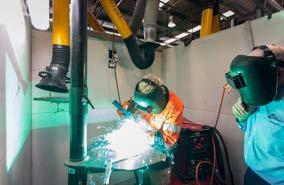
The Western Australian Government continues to invest in the State’s science, innovation and technology ecosystem, recognising its critical role in economic development through the generation of new ideas, products and services.
The Western Australian Government is committed to elevating local innovation and scientific research onto the global stage. To achieve these goals, the Western Australian Government released a 10-year Innovation Strategy in 2022, representing a bold plan to establish the State as a global hub of invention, investment, innovation and impact. This strategy is supported by a new $30 million West Australian Venture Capital initiative announced in 2024, which will support locally-based start-ups to scale up and create local jobs and accelerate the venture capital industry in WA.
A major focus is on transforming research outcomes into successful commercial ventures, which is being advanced through numerous targeted initiatives. The New Industries Fund supports the innovation ecosystem through various initiatives including the Commercialisation Bridge Grant – which helps to transform local innovations into sustainable and scalable businesses. Efforts are also underway to build international partnerships to enhance applied research capability in the State, including a feasibility study into new applied international research collaborations focused on green technology and the energy transition.
To support a flourishing future science and technology ecosystem, in 2024 the State also launched a 10-year Science and Technology Plan as well as an updated STEM skills strategy, Future state, future skills: Accelerating STEM skills for Western Australia.
Innovation is a key enabler of economic progress and can boost the State’s competitiveness and productivity across a range of industries. A number of major investments made by the Western A ustralian G overnment, i ncluding t he N ew I ndustries Fund, a im to e ncourage in novation by supporting collaboration across government, universities, business, industry and the community.
Launching i n 2024, t he G reenTech Hub is funded under an agreement between the Western Australian Government and Chevron as operator of the Gorgon Joint Venture. The $40 million partnership w ill se e t he e stablishment o f a n ew i nnovation h ub a nd Lower C arbon G rants ( LCG) Program. Curtin University has been nominated as the operator of the new Hub, which has a specific fo cus o n b uilding c apabilities a nd c apacity i n g reen technologies a nd s ervices. T he LCG Program will provide funds for large research and innovation activities across industries to test, demonstrate and deploy technologies that support lower carbon projects.
Founders Factory is a globally recognised venture studio and start-up accelerator which is set to launch its first Australian operation in Perth. Supported by $7.2 million from the Western Australian Government, the Perth Hub will help drive diversification and decarbonisation, with a focus on nature and biodiversity start-ups. Key areas of focus include reforestation and protection, land management, regenerative agriculture, water and coastal regions, sustainable infrastructure, and the circular economy.
All economic and industry activities operate within policy and regulatory frameworks set by governments. The Western Australian Government works to ensure that regulation allows businesses and investments to flourish, while meeting a range of important objectives, including community and environmental protection. Since it was reinvigorated in 2020, Streamline WA continues to make doing business easier in Western Australia by taking a whole-of-government approach to improving regulatory practice across the approvals system.
Following the Vogel-McFerran review in late 2023, the Western Australian Government committed to overhauling the State’s environmental approvals system to ensure it remains fit for purpose in a changing economic landscape. A new Coordinator General position has been established to coordinate approvals reform efforts, improve customer service and cross agency collaboration, and provide an integrated approvals reporting for better oversight and accountability.
The Western Australian State Budget 2024-25 also included $36.4 million to roll-out Environment Online. The digital platform
will provide a single gateway for water and environmental regulatory activities, automated case management and integrated data management. Most recently, significant reforms to the Environmental Protection Act took effect in November 2024, speeding up processes by allowing parallel approvals for the first time. A s at December 2024, 22 of the 34 recommendations of the Vogel-McFerran review are now fully or partly actioned.
These initiatives build on other efforts underway to minimise administrative burden and facilitate job-creating green energy projects. In December 2022, the Western Australian Government launched the Green Energy Approvals Initiative with funding of $22.5 million. This is helping to attract investment by improving Western Australia’s renewable energy credentials without compromising biodiversity. Enhancements to the State’s regulatory systems and processes will drive growth of key diversification opportunities, including renewable hydrogen industries, critical minerals processing as well as manufacturing green energy products such as batteries, electrolysers, solar panels and wind turbines.
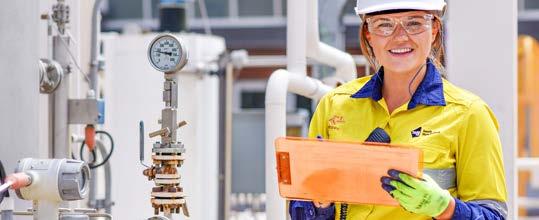
Foreign investment delivers major benefits to the Western Australian economy by driving new opportunities and international collaboration. Recent years have seen a significant expansion of the State’s network of international Invest and Trade Western Australia offices to offer enhanced support and information for investors in targeted markets.
A new office in the United States (in Austin, Texas) was opened in March 2024, enabling Invest and Trade Western Australia to better facilitate direct engagement with industry and government, and service investment and trade leads. A presence in North America also allows Western Australia to more effectively respond to emerging opportunities across
a range of sectors, including clean energy, health and medical life sciences and defence industries.
Since the 2021 Diversify WA update, Invest and Trade Western Australia offices have also been established in the following locations: Chennai (India), Ho Chi Minh City (Vietnam), Manila (the Philippines), Kuala Lumpur (Malaysia) and Frankfurt (Germany). In 2024, the Western Australian Government also established a new office in Hangzhou, China and a new Investment and Trade Commissioner role in Singapore.
Between March 2022 and October 2024, Invest and Trade Western Australia supported
47 outbound missions to 26 different markets to progress investment and trade outcomes across the State’s priority sectors. During the same period, Invest and Trade Western Australia coordinated 335 inbound industry and government delegations to Western Australia, representing a more than sevenfold return on outbound Ministerial missions.
Western Australia continues to reach important milestones under the numerous strategic partnerships held with its global partners. During the Indonesia Connect Roadshow 2023, Western Australia renewed its sister-state agreement with the province of East Java – a relationship dating back to 1990. A Memorandum of Understanding was
also signed in 2023 between Pilbara Ports Authority and Japan’s Port of Himeji (in Hyogo Prefecture, another sister-state of Western Australia), furthering collaboration and exploration of opportunities in the renewable energy supply chain.
The Investment Attraction Fund continues to support investment into innovative job creating activities. Funding Stream One was delivered in 2023, providing $156.4 million in funding to 42 projects. The second stream of the Fund is underway, focusing on accelerating innovation, scaling-up commercial potential and expanding local manufacturing capacity in new energy industries.
The importance of advanced manufacturing as an economic enabler has continued to grow over the past two years. Globally, many countries are moving towards building sovereign capabilities and bolstering supply chain security, especially in manufactured goods and raw materials.
The Australian Government has made significant investment in this direction, including the $22.7 billion Future Made in Australia p ackage a nd $15 b illion N ational Re construction Fund. These initiatives focus on lifting manufacturing capabilities that support the clean energy transition and enhance national security.
To leverage these trends, the Western Australian Government continues to cultivate an environment where advanced manufacturing thrives and strengthens sectors that are key to the State’s net zero goals. In May 2024, the Western Australian Government released the Advanced Manufacturing Prospectus, promoting the State’s sector to the global market. The prospectus consolidates the numerous
advanced manufacturing initiatives already underway and outlines key focus areas to address headwinds that manufacturers are facing.
The Advanced Manufacturing Council was also established in 2024 to support the development of the State’s manufacturing capacity and competitiveness. Chaired by the Minister Assisting the Minister for State and Industry Development, Jobs and Trade, the Council will take a strategic focus on economic diversification, jobs creation, industry development, and skills and training.
Building on these efforts, the Western Australian Government awarded grants of more than $43 million in 2023 for advanced manufacturing projects through the Investment Attraction Fund. Planning is also underway for an advanced manufacturing and technology hub in the Bunbury-Geographe area, which will create new supply chains, improve access to global markets, and unlock industry opportunities across the South West.

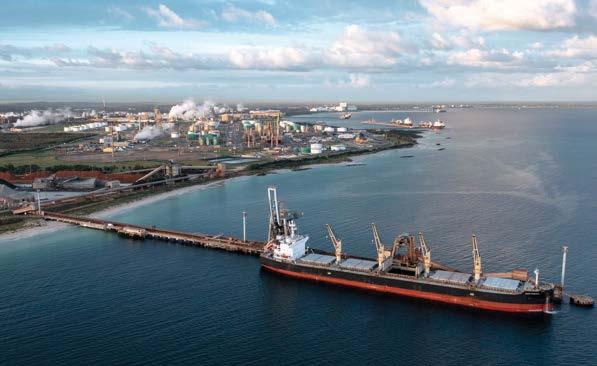
To support the State’s ambitions to maintain a thriving advanced manufacturing ecosystem and support economic diversification, the Western Australian Government has committed to transforming the Western Trade Coast ( WTC) into a Global Advanced Industries Hub. With a focus on the development of critical infrastructure, partnerships, and innovation capabilities, the program is aimed at supporting the region to seize new economic opportunities aligned with key global trends.
The WTC is the only heavy industrial precinct in the Perth metropolitan area, providing unique competitive advantages for industries within the region. It is also the planned location of Westport, Western Australia’s future primary container port, and the Henderson Defence Precinct.
Work to establish the Global Advanced Industries Hub has been underpinned by strong cross-government and industry collaboration. Through stakeholder insights and economic analysis, the State has identified t arget industries for the region, including renewable hydrogen, future facing minerals processing, and shipbuilding and sustainment.
In 2024, the Western Australian Government launched the Western Trade Coast Infrastructure Strategy, which outlines options for infrastructure development to support the growth of existing and future industries in the WTC. This Strategy will be used to inform and guide investment over time and provides government and industry with oversight and visibility of infrastructure options in the region.
To support development of the precinct, $125 million was committed in the Western Australian State Budget 2024-25 to open up new industrial land at L atitude 32.
Environmental, social and governance (ESG) frameworks have become an important investment tool with rising global awareness of the social and environmental impacts of economic activity. As investors become more socially conscious and selective about their business decisions, strong ESG performance will become more critical in remaining competitive and attracting investment.
The ESG performance of businesses across the State benefits from t argeted action the Western Australian Government is taking, including the State’s net zero commitment and decarbonisation of the State’s electricity network. Similarly important, however, are efforts to highlight the State’s E SG credentials to potential investors.
In recent years, global investors have put increasing importance on ensuring that decisions impacting communities are informed by robust consultation with the

right stakeholders. The Western Australian Government is particularly committed to meaningful collaboration with Aboriginal communities to promote inclusive growth and fair distribution of the benefits of economic development, as demonstrated by the Western Australian State Budget 2024-25 funding to establish an Aboriginal Economic Development Advisory Board.
The South West Native Title Settlement –Australia’s largest and most comprehensive Native Title settlement – continues to reach significant milestones since it commenced in 2021. The Agreement covers 200,000 square kilometres of land as well as six Noongar Agreement Groups. The inaugural meeting of the Noongar Economic Participation Steering Group was held in 2023, representing a major step towards supporting economic development and the growth of Noongar businesses across the South West.
The Western Australian Government is also supporting ESG initiatives through its debt raising activities. Developed by the Western Australian Treasury Corporation, the Sustainable Finance Program allows the Western Australian Government to fi nance internationally recognised ESG initiatives through its Sustainability Bond Framework. In June 2023, the State’s inaugural green bond was launched, raising $1.9 billion for eligible Government projects that deliver environmental outcomes. This both supports the State’s commitment to the Paris Agreement, reaching net-zero greenhouse gas emissions by 2050, and progressing the objectives of the United Nations Sustainable Development Goals.

The Western Australian Government has developed a number of information packs to raise the profile o f t he State’s e nvironmental, s ocial a nd g overnance ( ESG) credentials a nd a ctivities.
In N ovember 2021, t he Western A ustralian G overnment released i ts f irst E SG i nformation p ack (S upporting C ontinuous I mprovement i n E SG O utcomes fo r Western A ustralia) w ith s ubsequent up dates released in May 2022, June 2023 and August 2024. It outlines key policy commitments and government-led actions to achieve continuous improvement in ESG outcomes for the State.
Building on the ESG information pack, the Western Australian Government has also published the Western Australian Industry Information Pack to inform investment decisions in the State’s key industries. This pack is aimed at potential investors and global partners, and highlights the industry-led ESG initiatives taking place across the State’s identified priority sectors, as highlighted in Diversify WA.
To support the State’s economic diversification agenda, the Western Australian Government has established Invest and Trade Western Australia to promote the State’s unique strengths and diverse industries and provide a one-stop shop for incoming trade and investment enquiries.
Through a network of local and international offices, Invest and Trade Western Australia helps investors to navigate the State’s investment and trade ecosystem and assists local businesses to access foreign markets.
The Western Australian Government operates international investment and trade offices across 6 regions:
» ASE AN
» Greater China
» India-Gulf
» North East A sia
» The Americas
» United Kingdom/Europe
Further information on Invest and Trade Western Australia can be found at www.investandtrade.wa.gov.au
Department of Jobs, Tourism, Science and Innovation
Level 11, 1 William Street
Perth WA 6000
T: +61 (08) 6277 30 00
E: jtsi@jtsi.wa.gov.au
W: www.wa.gov.au/jtsi

Disclaimer
The information is provided in good faith and believed to be accurate and current at the time of publication, but this cannot be guaranteed. The State of Western Australia makes no representation, warranty or claim of any kind (express or implied) about the completeness, accuracy, reliability or suitability, with respect to the information. The reader is solely responsible for making their own assessment of the information and should make and rely on their own enquires, research and judgements in making decision affecting their own or any other persons’ interest.
To the fullest extent permitted by law, the State of Western Australia, its officers, employees, agents and representatives, shall in no way be liable, in negligence or howsoever, for any loss, damage, cost or expenses (regardless of whether the loss is direct, indirect or consequential) caused, sustained or incurred by anyone using or relying on the information, even if such information is or turns out to be wrong, incomplete, out of date or misleading.